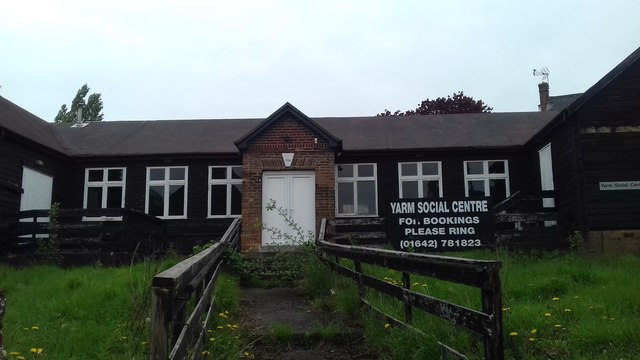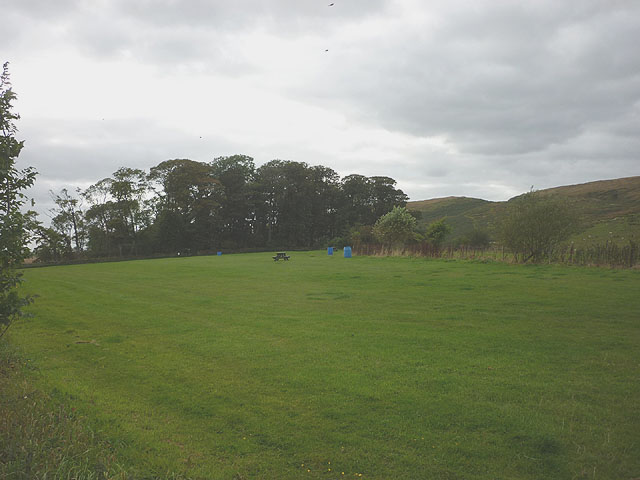Topics > Tees Valley > Yarm > Yarm Parish, 1848
Yarm Parish, 1848
Extract from: A Topographical Dictionary of England comprising the several counties, cities, boroughs, corporate and market towns, parishes, and townships..... 7th Edition, by Samuel Lewis, London, 1848.
YARM (St. Mary Magdalene), a market-town and parish, in the union of Stockton-on-Tees, W. division of the liberty of Langbaurgh, N. riding of York, 44 miles (N.N.W.) from York, and 238 (N. by W.) from London; containing 1511 inhabitants. This place, in old documents called Yarome, Yarum, and Yareham, formed part of the crown demesnes, and at the Conquest was conferred by William, together with numerous other places, on Robert de Brus, ancestor of the Scottish kings of that name, and who had no less than 43 lordships in the East and West ridings, and 51 in the North riding of the county. The church of Yareham was granted by Robert de Brus to the monastery of Guisborough, but the lordship continued in possession of his descendants till the reign of Henry III., when, Peter de Brus dying without issue, his lands were divided among his four sisters, and the lordship was conveyed, by marriage with the second, to Marmaduke de Thweng. From the Thwengs it passed to the Hiltons, of Cleveland; and from them to the Meynells, of Whorlton Castle.
The town is situated on a peninsula formed by the river Tees, and, being surrounded on all sides by more elevated lands, has frequently suffered from inundations. On the 17th of February, 1758, after a sudden thaw, the waters from the western hills rushed down with resistless violence, destroying cattle and other property in the immediate vicinity, and rising in the streets of the town to the height of seven feet; and in November, 1771, in an inundation of the Tees, caused by an irruption of the Solway moss, the waters rose in many parts of the town to the height of twenty feet, attended with loss of life and the destruction of much valuable property. The town has since experienced other floods, but they have been less formidable in their consequences, and of late years have been very rare, on account of the great improvements in the river below Stockton, the course to the sea having been made straighter, and the distance considerably lessened. A bridge of five pointed arches was erected over the river by Bishop Skirlaw, in 1400, of which, in order to give a freer passage to the stream, the northern arch was many years since rebuilt in a circular form, and of wider span. In 1802, an act was obtained for shortening the distance and improving the road to Thirsk, under the provisions of which it was resolved to remove the ancient bridge, and erect an iron one in its place. Accordingly, an elegant cast-iron bridge of one arch, 180 feet in span, cast at the foundry of Messrs. Walker and Co., of Rotherham, was erected in 1805, at an expense of nearly £14,000; but, from some defect in the foundation of the abutments, the arch fell down on January 12th, 1806, during the night previous to the day on which it was intended to be opened to the public; and it has not been restored. Fortunately, the ancient bridge had not been taken down, and it has since been greatly improved.
The decline of the town from its former prosperity may be partly attributed to the vicinity of the rising borough of Stockton. It consists chiefly of one spacious street, in the centre of which is the town-hall, a neat square building erected in 1705, upon arches affording an entrance on each side into the area, appropriated to the butter market. The trade principally arises from the exportation of agricultural and mineral produce, and the manufacture of tobacco-pipes, bricks, and tiles, especially draining-tiles. The inhabitants also participate largely with those of Stockton in the salmonfishery of the Tees, the tide flowing up more than six miles above the bridge; and in addition to the advantages derived from the navigation of the river, which admits vessels of 60 tons' burthen to the wharfs, the town has a branch of the Stockton and Darlington railway, affording great facility for the conveyance of coal and other supplies. The market is on Thursday, and fairs are held annually on the Thursday before the 6th of April, on Ascension-day, August 2nd, and on the 18th, 19th, and 20th of October, for horses, cattle, sheep, and cheese, of which last immense quantities are sold on the 20th. The market-place is in the area around the town-hall, on one side of which are commodious shambles for the sale of butchers' meat. A court for the recovery of small debts is held twice a year, under the lord of the manor, Thomas Meynell, Esq., of Kilvington Hall; and petty-sessions are held every alternate Thursday, by the county magistrates.
The parish comprises 1135a. 1r. 35p., of which 510 acres are arable, 536 meadow and pasture, 50 woodland and plantations, and the remainder gardens, sites for building, roads, water, and waste. The surface is varied, and in many parts of pleasing character. The soil is generally a strong loam, well adapted for wheat and beans, and the meadows and pastures are luxuriantly rich; clay of good quality for bricks is abundant. The Friarage, a handsome mansion belonging to Mr. Meynell, occupies the site of a convent for Black friars, founded by Peter de Brus, who died in 1240. It is beautifully situated on the bank of the Tees, along which the grounds extend for nearly a mile, tastefully laid out, and embellished with a stately avenue of elms leading to the mansion, in which is a Roman Catholic chapel.
The living is a perpetual curacy; net income, £210; patron and appropriator, the Archbishop of York, whose tithes have been commuted for £265. 10.: the glebe comprises about two acres, with a house and cottage. The church, situated by the river and on the west side of the town, was built, with the exception of the tower, which is ancient, on the site of a church destroyed by fire in 1730. It is a neat edifice, but ill according in its style with the tower, which is a beautiful specimen of Norman architecture. The interior consists of a nave, aisles, and chancel; the east window is embellished with a full length figure of Moses delivering the Law from Mount Sinai, finely executed in stained glass, and presented to the church by the late William Chaloner, Esq. There are places of worship for the Society of Friends, Independents, Warrenites, Primitive Methodists, and Wesleyans. The free grammar school was founded by letters-patent of Elizabeth, in the 30th year of her reign, and endowed with some land and a small rentcharge by Thomas Conyers, Esq., of Eaglescliffe, in the county of Durham; the endowment was subsequently augmented by Mr. Chaloner, with £400 three per cent, consols., and now produces an income of £21 per annum. Mr. Chaloner also bequeathed £100 four per cent, stock, the dividends to be paid to the minister of Yarm for four Sunday-evening lectures to be delivered annually. The school, which is situated in the churchyard, was formerly under the direction of twelve governors, by whom the master was chosen; but that body became extinct from the neglect of the survivors in not appointing their successors, and the scholars are at present nominated by the minister and churchwardens. An hospital dedicated to St. Nicholas was founded in 1185, by the family of Brus, and flourished till the Dissolution, when its revenue was £5. There are no remains of it, but the site is obscurely pointed out by the name of the southern approach to the town, which is still called "The Spittal."

from https://openlibrary.org/books…
A topographical dictionary of England, Samuel Lewis, 7th Ed., 1848
- A topographical dictionary of England
comprising the several counties, cities, boroughs, corporate and market towns, parishes, and townships, and the islands of Guernsey, Jersey, and Man, with historical and statistical …
Added by
Simon Cotterill


from https://openlibrary.org/books…
A topographical dictionary of England, Samuel Lewis, 7th Ed., 1848
- A topographical dictionary of England
comprising the several counties, cities, boroughs, corporate and market towns, parishes, and townships, and the islands of Guernsey, Jersey, and Man, with historical and statistical …
Added by
Simon Cotterill





